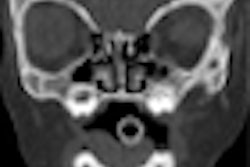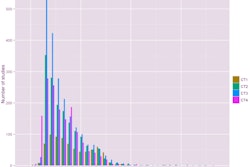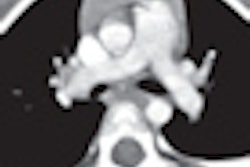When performing pediatric CT scans, the use of automated exposure control (AEC) combined with dose modulation can reduce radiation dose exposure by up to 30%, according to a study published March 8 in Academic Radiology.
Researchers from the University of Erlangen-Nuremberg evaluated the effects of dose reduction software (Care Dose 4D, Siemens Healthcare) on image quality in pediatric CT exams. The software program automatically adapts tube current values to the individual patient.
The study group analyzed CT images of the chest, upper abdomen, and pelvis for 71 consecutive patients ranging in age from 2 to 13 years. All of the scans were performed on a 64-slice CT scanner (Somatom Sensation 64, Siemens) and used a tube voltage of 120 kV, collimation of 64 x 0.6 mm, pitch of 1.0, and 5-mm slice thickness.
Two radiologists together assessed image quality. Fifty-five percent of images were rated as excellent, and the remaining images were of diagnostic quality. The researchers used body-weight-adapted standardized scan protocols to calculate expected dose values for each patient to simulate radiation exposure if the software had not been used.
The software reduced dose-length product (DLP) by 30.4% and CT dose index volume (CTDIvol) by 29.5%, according to lead author Dr. Sedat Alibek and colleagues. Chest CT exams had the highest dose reduction (31.6%), followed by pelvic scans (28%) and upper abdominal scans (27.6%).
Radiation dose reductions were lower than those achieved for adult patients in similar studies. The authors attributed this in part to the differences in the shape of the exam region in the axial plane. Young children have a round-shaped diameter, compared to the oval-shaped diameter of teenagers and adults. They noted that the more oval shaped the diameter of a person being scanned, the more efficient the online tube current modulation in the axial plane.
Using the AEC software also provided another benefit: Although the study did not measure workflow improvements, the authors noted that individual scan workflow was optimized because it was no longer necessary to obtain the height, weight, and age of the patient to identify the best scan protocol.




















